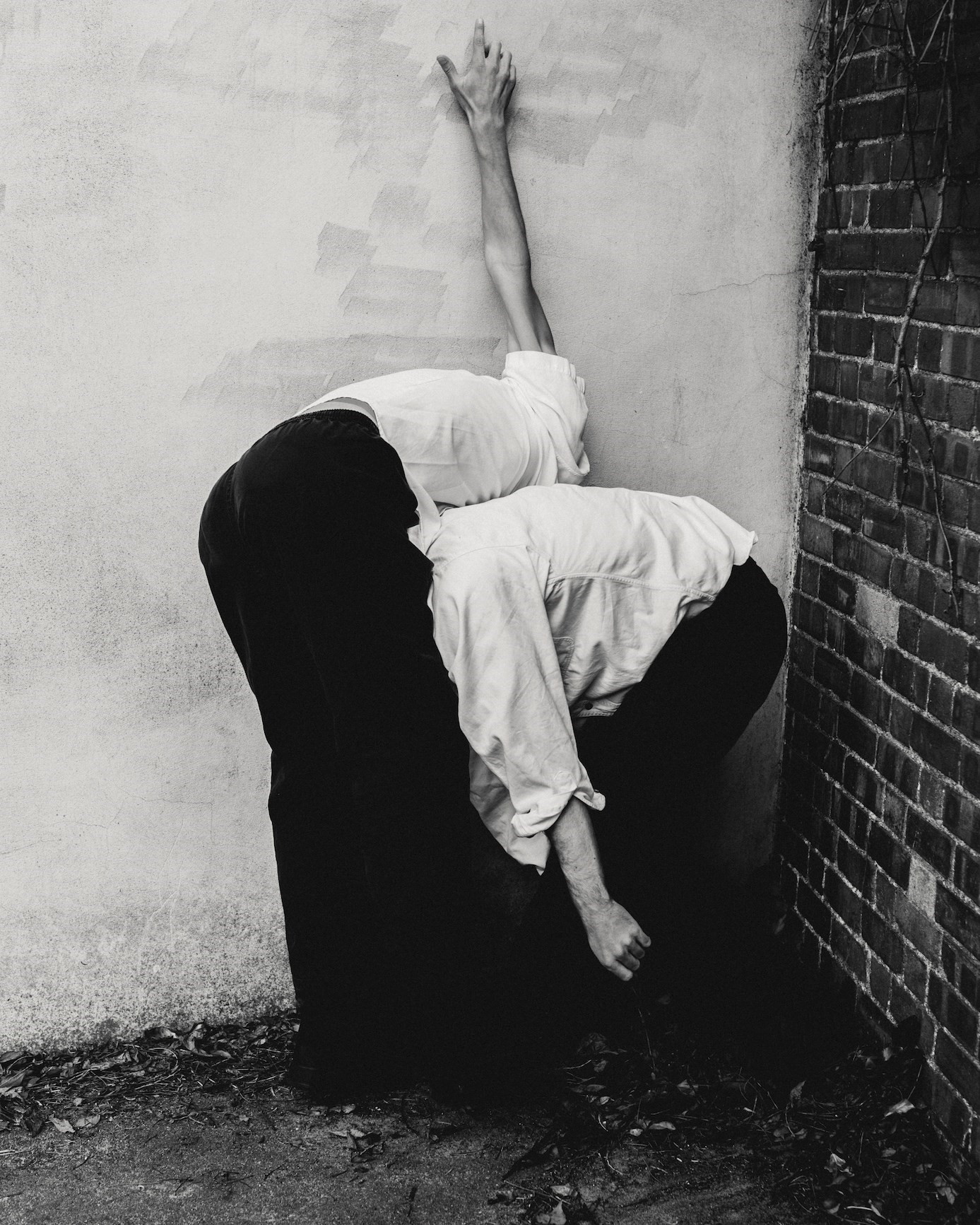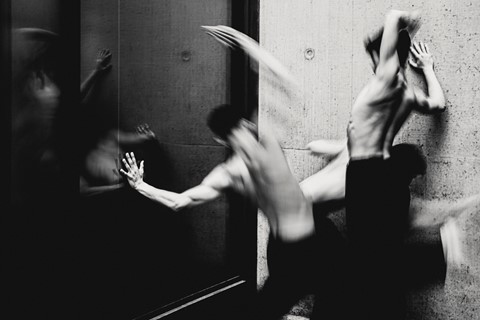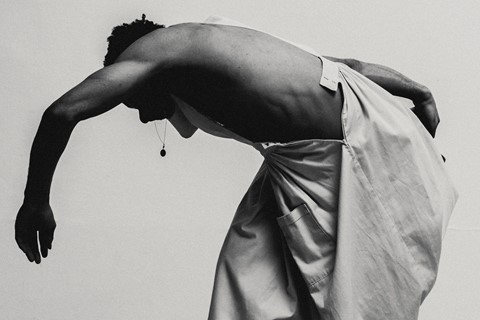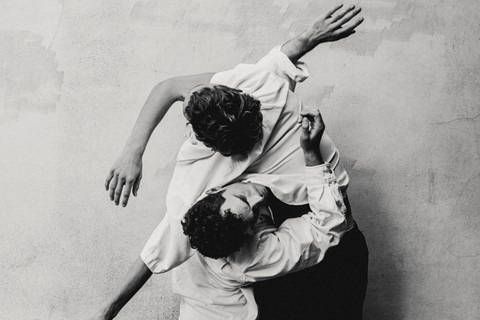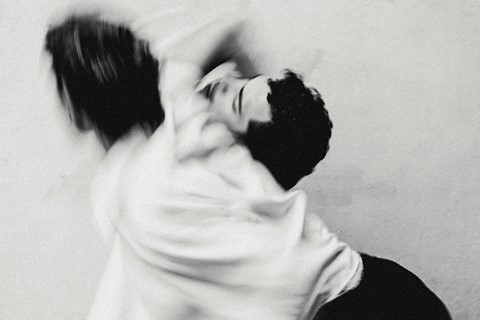Falling Leaves is the debut publication by Paul Phung. A regular contributor to AnOthermag.com, shooting striking backstage imagery at the shows of Simone Rocha, Craig Green and Rick Owens, Phung has applied his distinctive, often monochromatic photographic style, in a close collaboration with choreographers and performers, presenting a series of five acts grappling with the unspoken language of the body. Shot over the course of seven years, the book is a hallucinatory ode to dance and the euphoric feelings it inspires in its audience.
Below, AnOther spoke with Paul Phung, Oliver Boulton – the designer and publisher of the book – and Maisie Skidmore, whose writing underscores each act. The trio discuss the relationship between photography, language and performance, how they envisage the reader will experience the publication, and Phung’s fondness for uniforms.
Adam Murray: Can you explain your longstanding interest in dance and performance?
Paul Phung: Shortly after I graduated, I started shooting fashion and I just hated everything I made. I was fresh out of university and so I took on every job, but it was nothing like I wanted the work to be, so I decided to stop. I completely quit for a year and really thought about why I started photography in the first place.
I took up an artist residency opportunity in Italy, which felt like going back to school. I spent time analysing my work and realised that I knew I could not direct people the way I wanted to. I needed to learn about movement.
I figured that a way in would be to observe dancers. I spent a long time working and watching students at a dance school in Richmond called Rambert. I got on very well with a dancer called Connor Scott, he and I spent a lot of time together talking about ideas, shooting and becoming close friends. He features heavily in the book.
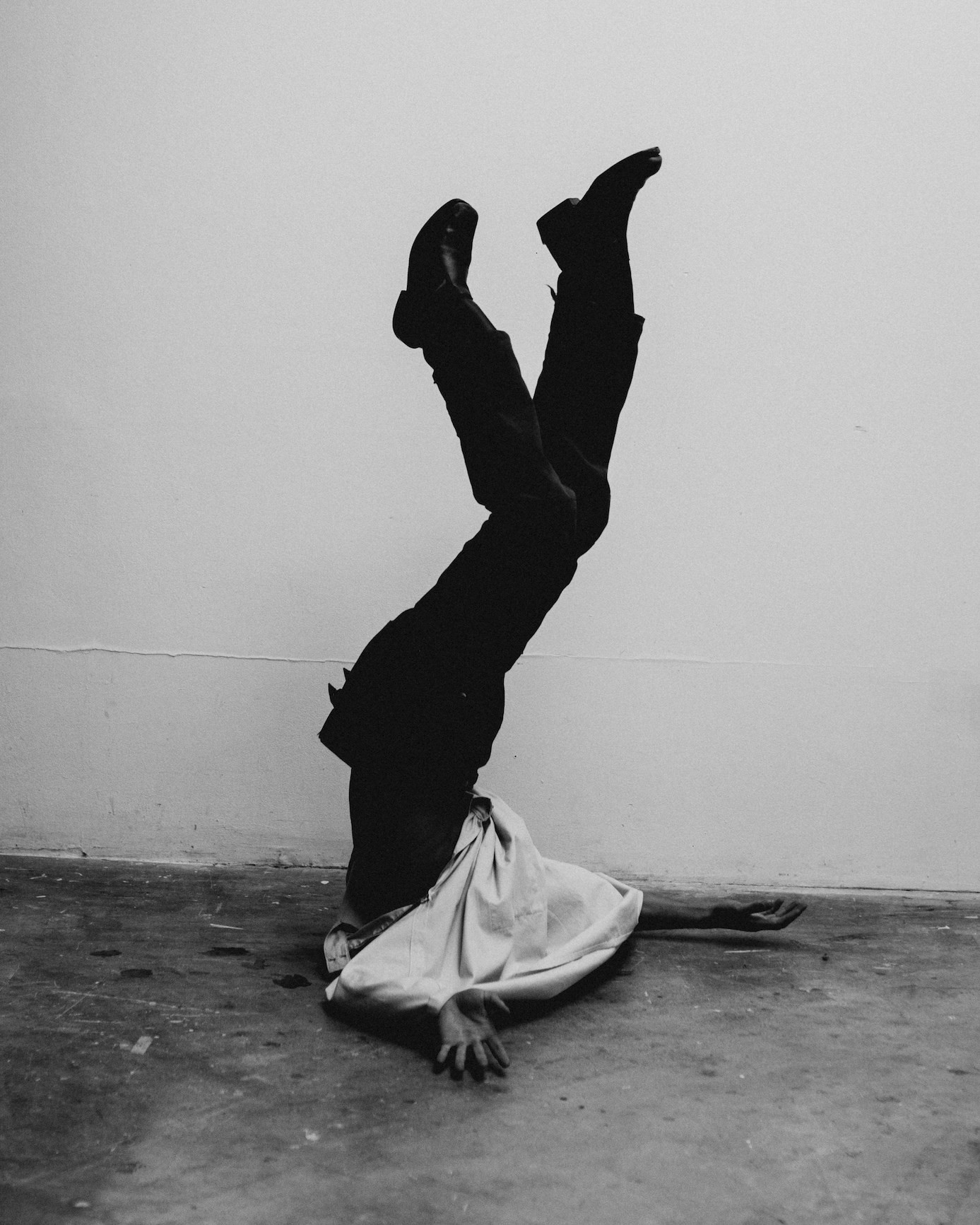
“I knew I could not direct people the way I wanted to. I needed to learn about movement” – Paul Phung
AM: Explain more about how you interact with the performers. Is it spontaneous? Are you reacting to them, or is it carefully planned?
PP: At first, we had to speak about it a lot, because I was so fresh to it. But now, I feel like I am moving with them. I don’t take a lot of photographs because I know it so well. I can anticipate their next moves. I try not to disturb them. I wait to see the moment to capture, I try not to get too involved.
AM: What is the significance of the clothes that the dancers are wearing?
PP: I’ve always had a fondness for uniforms, which I believe began in childhood when I saw priests walking around town. The identity tied to uniforms is a significant part of my life; I feel quite unsettled without my white shirt, as if I’m not myself. For Falling Leaves, I wanted to incorporate this concept by having the dancers wear similar attire, whether it’s white shirts with black trousers or just black trousers without shirts. I think this adds an element of calmness and serenity to the photos, allowing viewers to clear their minds and focus on the dance unfolding through the pages.
AM: Oliver, why were you keen to design and publish this book?
Oliver Boulton: Firstly we were taken by the work. With Ex. Coda, the publishing house I founded together with Charlie Noon, we are looking for projects that are unrealised in a sense, without definition. We are interested in the book as a form, as an artwork in and of itself and as a means to translate. We felt there was an opportunity with Paul’s project to be developed in a collaborative way. We proposed this idea of a publication that didn’t have an obvious starting point, orientation or end.
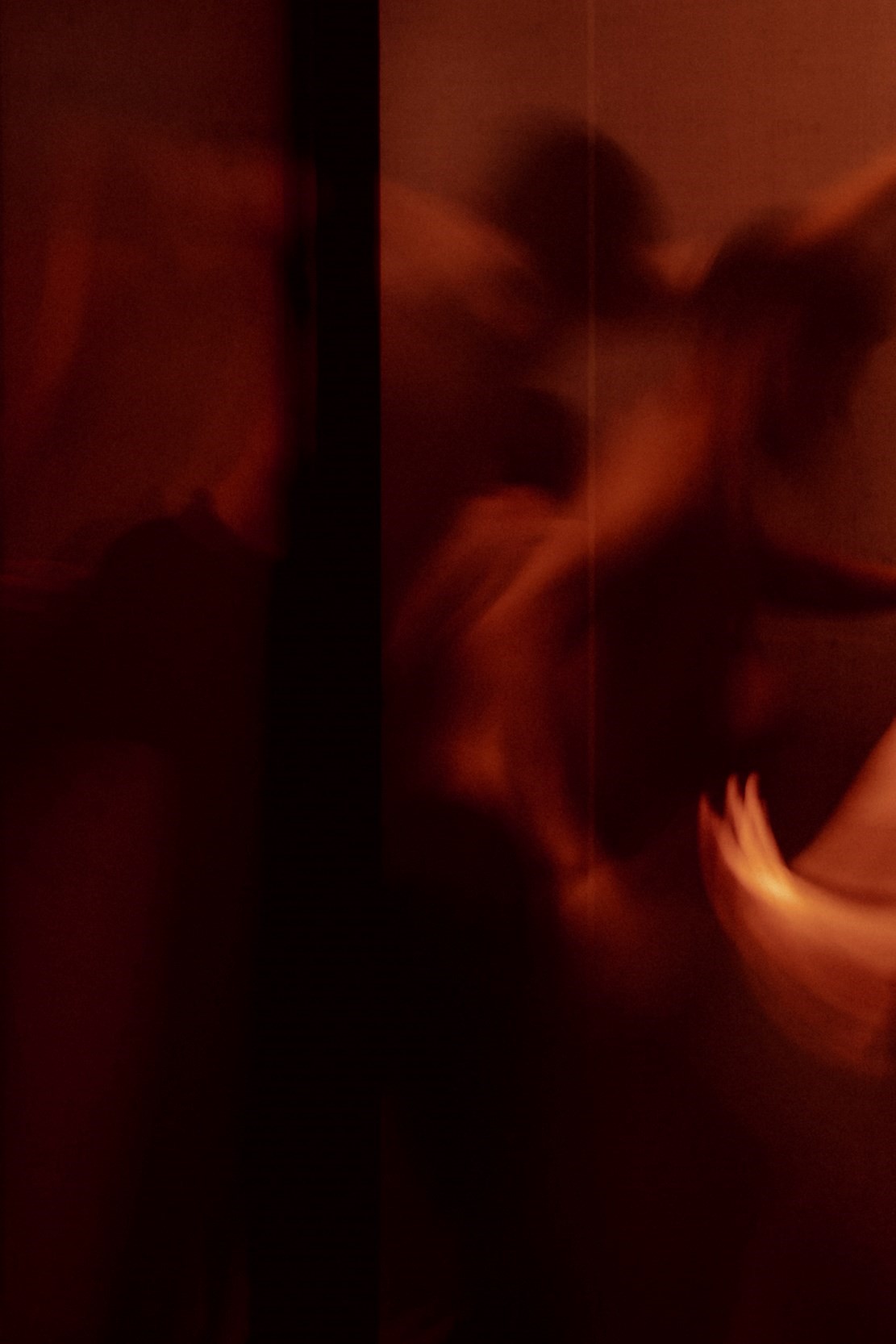
AM: How do you imagine a reader will experience the work?
OB: In and out of order. The format is a Z fold, meaning the book is split in two, with the narrative structure divided into five acts. Each side of the publication begins with crops of the dancers at near life-size, as if the reader was in the performance themselves. The format inevitably means the reader will need to rotate the publication; we were trying to suspend any reading direction or orientation. Similarly, with Maisie’s texts we echoed this approach: with no beginning or end, the stanzas can be read in the sequence they are discovered.
AM: Maisie, how did you respond to Paul’s photographs?
Maisie Skidmore: I am fascinated by the overlaps between language and dance, but also the body and movement in photography.
AM: How do you use language in relation to both photography and dance?
MS: I have been writing about photography for many years and I am always interested in the limits of what you can do when writing about it. It is always interesting to see where you can embellish or bring out something new from an image.
It is a similar exercise as far as language and dance is concerned. I was attending performances and having the most marvellous, transcendent experiences watching dance happen. I started experimenting with writing in response to dance. I am interested in the push and pull between the two forms.

AM: Oliver spoke about the design of the book and the role this plays in the way a reader experiences the publication. How does your writing function in this context?
MS: I think it is important for us to challenge the notion that we provide something to be experienced in a very prosaic way. I love to imagine seeing someone on the train reading it, turning it upside down, their brow furrowed, twisting it around, their elbows all over the shop. Often when I watch a dance performance, I am not focused on understanding a clear narrative, rather, I feel the experience in my own body. We wanted to see how far we could make a book do the same thing.
Fallen Leaves by Paul Phung is published by Ex. Coda, and is out now.
